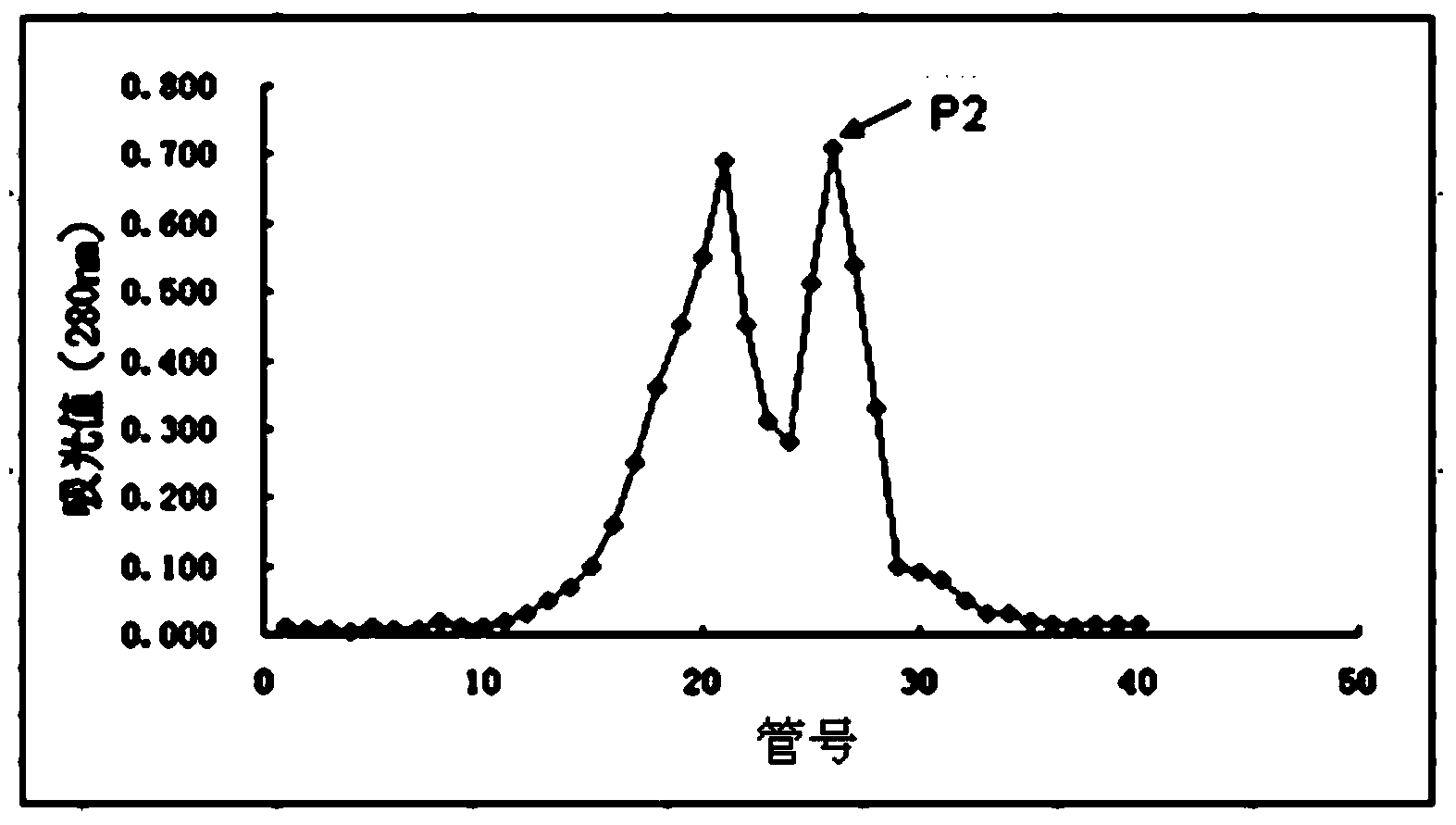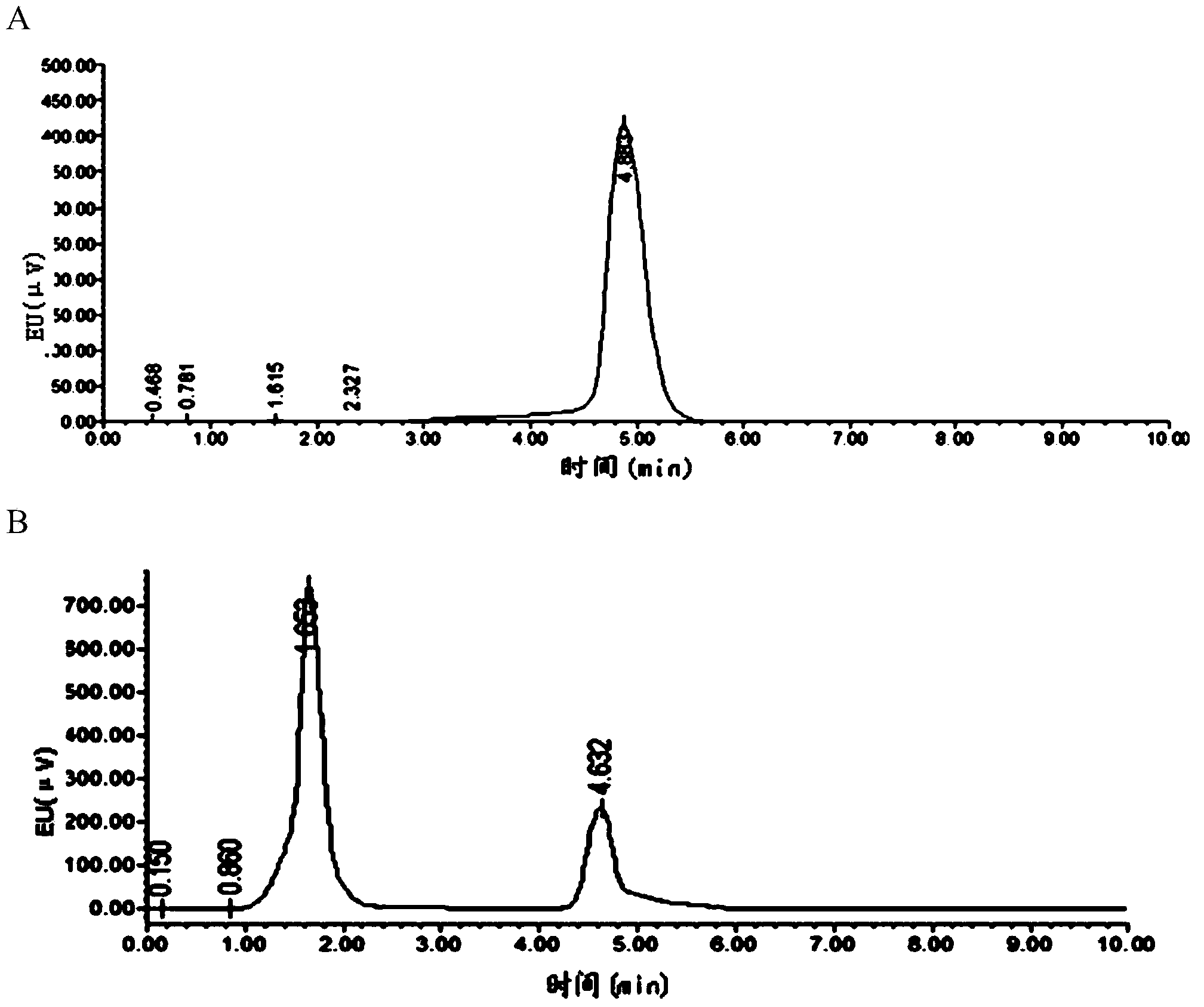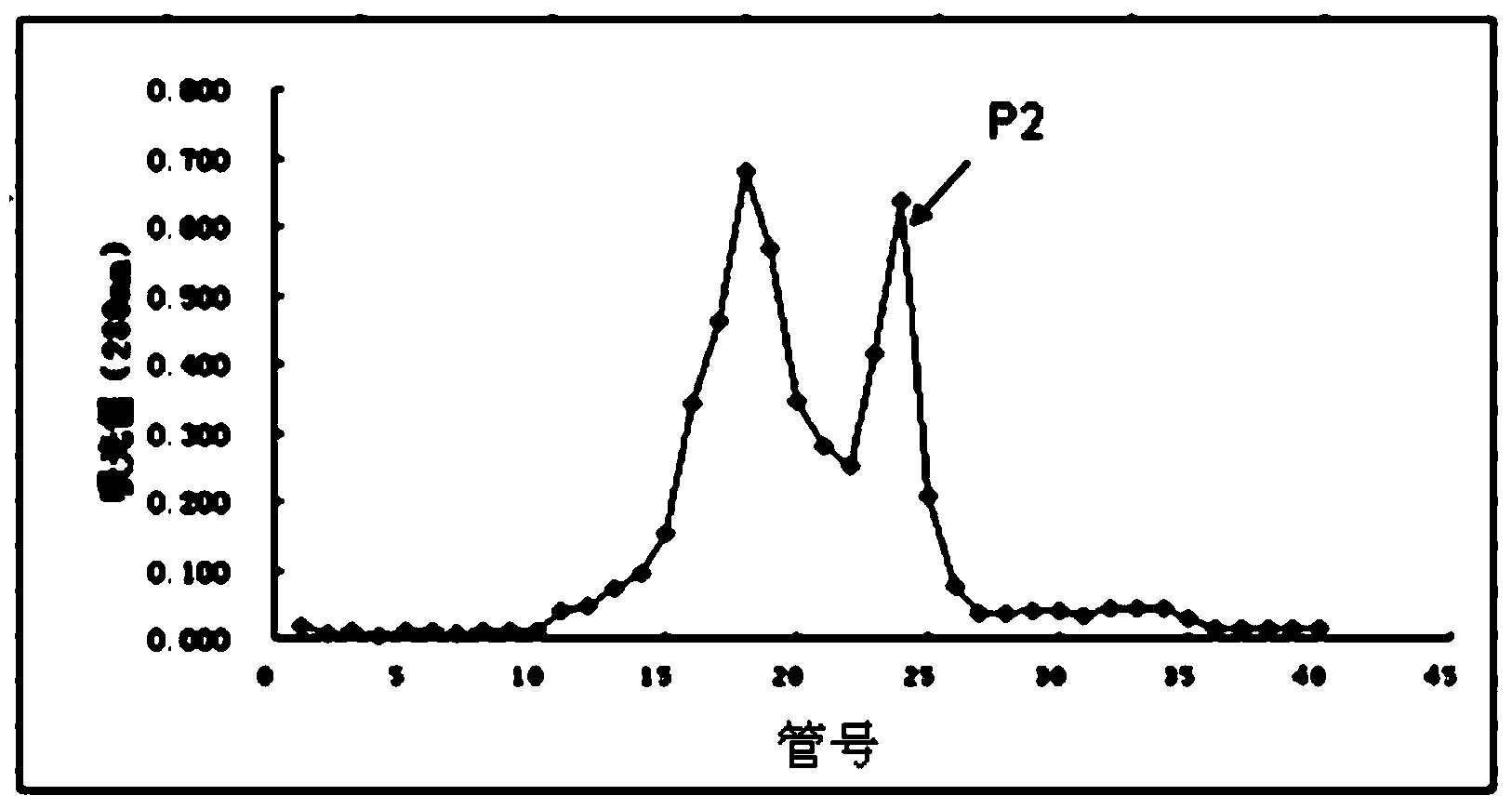Separation method of components of non-peroxide enzyme capable of degrading zearalenone toxins
A zearalenone, non-peroxide technology, applied in the field of microbial applications, can solve the problems of inability to purify non-peroxidase enzymes
- Summary
- Abstract
- Description
- Claims
- Application Information
AI Technical Summary
Problems solved by technology
Method used
Image
Examples
Embodiment 1
[0072] (1) Culture: Inoculate with 1% (v / v) Acinetobacter sp.SM04 suspension (OD 600 =0.6) culture (M2 medium) was cultured in an air-bath shaker at 28°C (150r / min) for 24h, the liquid culture was centrifuged for 10min (8000×g, 4°C), and the supernatant after centrifugation was used 0.22μm membrane filtration, and the filtrate was concentrated 8 times into a crude enzyme solution at 45°C using a vacuum rotary evaporator;
[0073] The formulation of the medium used is as follows:
[0074] M2 medium: 12.5g sodium acetate, 2.5g NH 4 NO 3 , 1.2g K 2 HPO 4 ·3H 2 O, 1g KCl, 0.4g MgSO 4 ·7H 2 O, add 10mL trace element stock solution, add distilled water to make up to 1000mL, adjust the pH to 7.0 after mixing;
[0075] The formula of described trace element stock solution is as follows: 2g / L FeSO 4 ·7H 2 O, 0.5g / L MnSO 4 4H 2 O, 0.4g / L CuSO 4 ·5H 2 O, 0.5g / L CoCl 6 ·6H 2 O and 0.4g / L ZnCl 2 .
[0076] (2) Add the crude enzyme solution in step (1) to an anionic Sephad...
Embodiment 2
[0084] (1) Culture: inoculate with 2% (v / v) Acinetobacter sp.SM04 suspension (OD 600 =0.8) culture (M2 medium) was cultured in an air-bath shaker at 30°C (180r / min) for 36h to the end of logarithmic growth, and the liquid culture was centrifuged for 12min (9000×g, 5°C). The supernatant was filtered with a 0.22 μm filter membrane, and the filtrate was concentrated 9 times at 50°C using a vacuum rotary evaporator to become a crude enzyme solution;
[0085] The formulation of the medium used is as follows:
[0086] M2 medium: 15g sodium acetate, 2.75g NH 4 NO 3 , 1.35g K 2 HPO 4 ·3H 2 O, 1.25g KCl, 0.5g MgSO 4 ·7H 2 O, add 10mL trace element stock solution, add distilled water to make up to 1000mL, adjust the pH to 7.3 after mixing;
[0087] The formula of the trace element stock solution is the same as that in Example 1-(1).
[0088] (2) Add the crude enzyme solution in step (1) to an anionic Sephadex column DEAE Sephadex A-50 column (2.0cm×15cm), and use phosphoric aci...
Embodiment 3
[0094] (1) Culture: Inoculate with 3% (v / v) Acinetobacter sp.SM04 suspension (OD 600 =1.0) culture (M2 medium) was cultured in an air bath shaker at 28°C (200r / min) for 48h, the liquid culture was centrifuged for 15min (10000×g, 6°C), and the supernatant after centrifugation was used 0.22μm membrane filtration, and the filtrate was concentrated 10 times by a vacuum rotary evaporator at 55°C to form a crude enzyme solution;
[0095] The formulation of the medium used is as follows:
[0096] M2 medium: 17.5g sodium acetate, 3g NH 4 NO 3 , 1.5g K 2 HPO 4 ·3H 2 O, 1.5g KCl, 0.6g MgSO 4 ·7H 2 O, add 10mL trace element stock solution, add distilled water to make up to 1000mL, adjust the pH to 7.5 after mixing;
[0097] The formula of the trace element stock solution is the same as that in Example 1-(1).
[0098] (2) Add the crude enzyme solution in step (1) to an anionic Sephadex column DEAE Sephadex A-50 column (2.0cm×15cm), and use phosphoric acid with pH 7.0, 6.5, 6.0, 5...
PUM
| Property | Measurement | Unit |
|---|---|---|
| Molecular weight | aaaaa | aaaaa |
| Molecular weight | aaaaa | aaaaa |
| Molecular weight | aaaaa | aaaaa |
Abstract
Description
Claims
Application Information
 Login to View More
Login to View More - R&D
- Intellectual Property
- Life Sciences
- Materials
- Tech Scout
- Unparalleled Data Quality
- Higher Quality Content
- 60% Fewer Hallucinations
Browse by: Latest US Patents, China's latest patents, Technical Efficacy Thesaurus, Application Domain, Technology Topic, Popular Technical Reports.
© 2025 PatSnap. All rights reserved.Legal|Privacy policy|Modern Slavery Act Transparency Statement|Sitemap|About US| Contact US: help@patsnap.com



